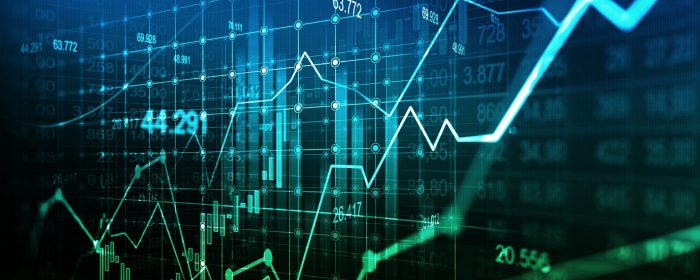Understanding the attributes of ESG data
The sharpening of focus on ESG issues had made the need for reliable measurement of ESG data sets more pressing. But with the majority of ESG research based on mandatory reporting and voluntary disclosures by organisations, some elements are being overlooked. To complete the picture, alternative ESG data must also be analysed
The drive towards ESG investing and sustainable finance, and greater public interest in corporate governance, has caused the volume of reporting on environmental social and governance (ESG) factors to expand rapidly. With ESG the hottest topic in the boardroom, and a major consideration in investment decisions, increasing amounts of data are being generated around the subject. ESG metrics are being analysed in order to surface related risks and opportunities, shape business strategies and model investment processes
ESG data is an essential basis for organisations looking to quantify their ESG exposures. It allows them to understand their liability on the ESG issues that have the greatest resonance with their stakeholders. By analysing its ESG position, a company can understand where it needs to improve, and manage any associated risks.
The ESG data available for such measurement falls into three categories:
- Mandatory reporting linked to frameworks such as the EU’s NFRD
- Voluntary company self-disclosure in sustainability, CSR or ESG reports
- Alternative ESG data from stakeholder perceptions
All three must be incorporated in order to achieve the best understanding of a company’s ESG position.
Mandatory ESG data
Although there is currently no global, cross-sector regulation on ESG reporting, in some industries and geographies, there exists requirements for companies to report on environmental, social and governance issues. The resulting mandatory ESG data is released through companies’ end of year reports, along with their financial results. As such, it is available to anyone with an interest in the ESG pedigree of those businesses.
Given the burgeoning trend, it is likely that regulation will increasingly demand that companies of all sizes in all sectors disclose data on their ESG activities. Among the existing mandates for ESG reporting is the European Union’s Non-Financial Reporting Directive (NFRD), which requires companies with more than 500 employees to include sustainability risks in their corporate reporting.
These risks include environmental, social and staffing concerns, human rights, anti-corruption and board diversity. In another step towards making ESG data release compulsory, in 2019 the EU passed the Sustainable Finance Disclosure Regulation (SFDR), which from the start of 2021 requires financial market participants to disclose information on how they approach adverse sustainability impacts.
Moves are also being made to standardise the corporate reporting of ESG issues globally. The World Economic Forum (WEF) has outlined proposed standards for corporate disclosure around specific ESG criteria, which will help to make reporting more consistent. The World Federation of Exchanges (WFE), the Task Force on Climate-Related Financial Disclosure (TCFD) and the World Business Council for Sustainable Development (WBCSD) have also released their recommendations to companies on disclosing non-financial risks.
Voluntary ESG data
Beyond regulatory requirements, ESG disclosures can also be voluntary. As the imperative for accountability evolves, and the passing of comprehensive legislation surrounding ESG reporting becomes imminent, it behoves organisations to stay ahead of the game, rather than find themselves lagging. Growing pressure, both direct and indirect, to be more transparent about ESG issues such as community involvement, employee treatment and climate impact, is making self-disclosure a necessary business practice.
Companies that recognise the link between solid ESG policies and improved financial performance are among those making strides in the self-disclosure of ESG data.
At present, however, there remains the issue of standardisation of reporting frameworks. The data released needs to be relevant to and accessible by all of a company’s stakeholders, and cover the full gamut of ESG activity, rather than just those areas where the business believes it is doing well and is comfortable reporting on.
For companies wishing to both monitor and publicise their positive social responsibility activity, self-disclosure is a useful tool, a fact reflected by its growing uptake. In 2019, 90% of the 500 top US companies by market capitalisation published sustainability reports. As well as releasing corporate reports, self-disclosure can take the form of public relations releases, press conferences, and even social media posts on ESG activity, all of which adds to the total volume of voluntary ESG data.
Alternative ESG data
Completing the triumvirate of data categories is a newer entrant to the ESG measurement scene: alternative data. This ESG data set comprises information which is not released and cannot be controlled by the organisation in question. Rather, it covers the independent perceptions held by that organisation’s stakeholders about its various ESG activities. Its value lies in bridging the gaps in the picture left by mandatory reporting and self-disclosure.
Alternative data is composed of external data sets available in the public domain. Content published across traditional media, social platforms, broadcast channels, and from governmental debates, regulator reports and AGMs all provide insight into how a company is seen to be performing on the ESG stage.
Real-time collection and analysis of this vast volume of data is possible through an ESG Intelligence solution. Having been harvested from millions of pieces content published by myriad sources across the world, the data is classified by issues, individuals, industries, companies and stakeholders, and rated against an ESG framework such as that set out by the Sustainability Accounting Standards Board (SASB). Content is scored for sentiment, and the result is an accurate, transparent ESG profile for the organisation, providing a sector benchmark and in-depth stakeholder analysis.
The ESG data challenge
The complications surrounding the measurement of ESG data are rooted in the broad scope of the subject matter; a fragmented reporting landscape built on multiple frameworks; and a lack of consistency in how companies report on it. With no set of global ESG standards to report against, there is neither accountability nor comparability. In the case of both mandatory reporting and voluntary self-disclosure, only partial data sets, which are vetted and released by the subject organisation itself, are available. This data is usually retrospective, with long turnaround times, and is unlikely to provide indicators of shifts in ES trends.
The existence of numerous different ESG rating providers, employing various methodologies, also serves to muddy the waters. Many use data which has little traceability, and their opacity makes them hard to compare usefully.
To gain a comprehensive view of an organisation’s ESG liability, it is necessary to apply a transparent, consistent measurement solution that takes into account all of the available data sets. Mandatory, self-disclosed and alternative data all contribute different pieces of the puzzle. The first two will become larger and more complex, as countries and industries introduce ESG reporting requirements, and as companies recognise the importance to their stakeholders of transparency over ESG activities.
The latter’s usefulness, meanwhile, lies in not only in the fact that it provides a view of the relationship between different stakeholder priorities and ESG concerns, but also as a leading indicator of shifts in an organisation’s ESG ratings, and therefore an early warning of ESG opportunities and risks.
Be part of the
Stakeholder Intelligence community








